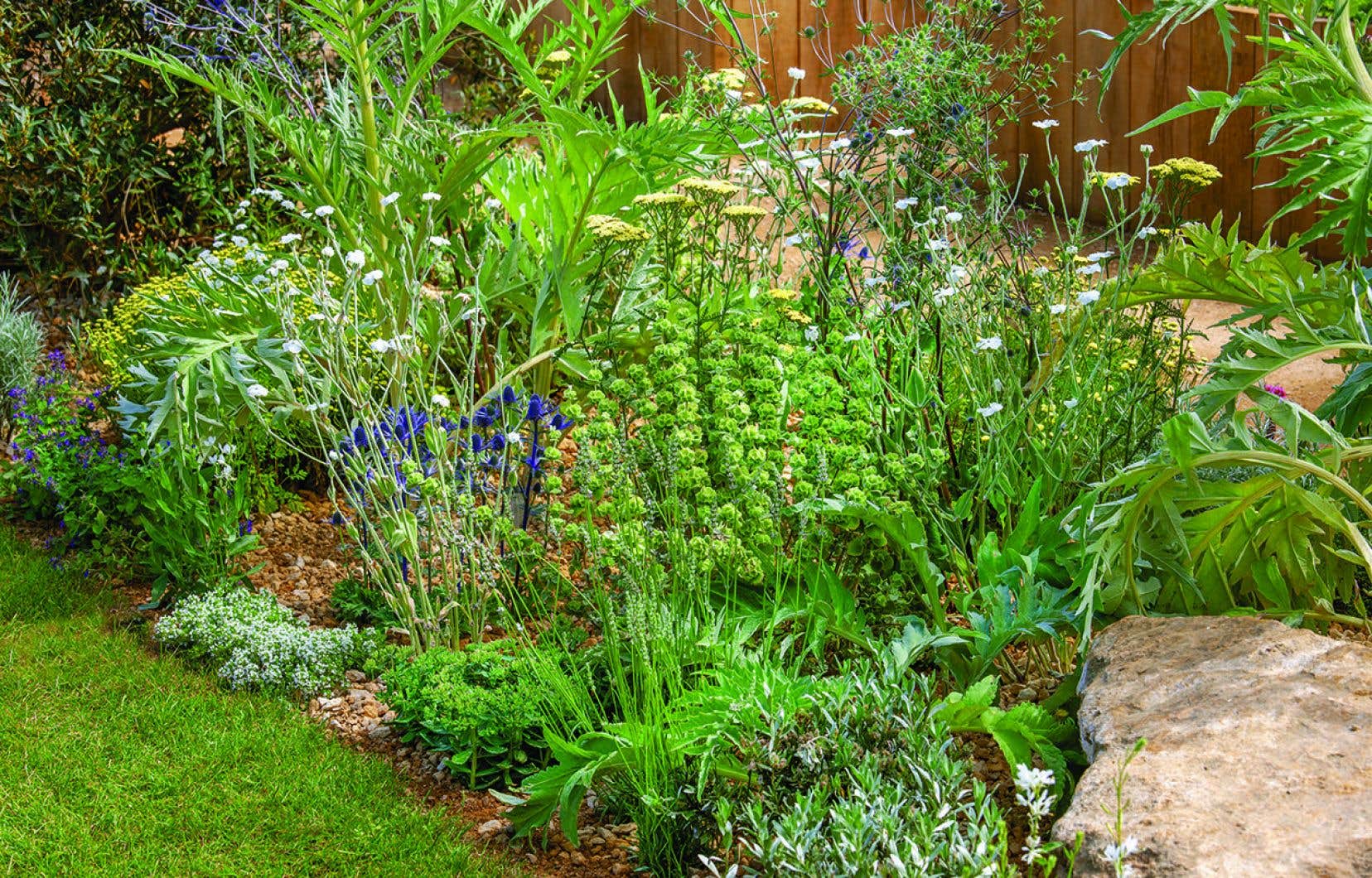This text is part of the special Pleasures notebook
What could be more natural than bending over to smell a pretty flower? But doing it for leaves is a little more unusual. However, many plants have a delicious smell thanks to their foliage that will intoxicate your nostrils. Do not wait any longer ! Start creating a real garden of the senses.
Yarrows
On the perennial side, there are firstly numerous species of yarrow, most of which share heavily cut, silver-gray foliage with a spicy aroma. Their flowering is also long-lasting. Dense, flattened bouquets of small flowers, usually yellow, follow one another almost all summer if the faded ones are removed.
Anthemis
This species has silvery, chamomile-scented, heavily cut foliage. In addition, their yellow daisies follow one another all summer if you remove the wilted ones.
Marshall’s Anthemis forms ground cover cushions just 6 inches tall that are as pleasant to stroke as they look. Once in flower, the plant reaches a size of between 30 and 45 cm. Be careful, it must be planted in a well-drained and very bright location, otherwise its life will be short. Dyer’s Anthemis adapts better to richer, more humid conditions.
The mugwort genus contains many fragrant plants like French tarragon. Most ornamental varieties share silvery foliage with a vaguely anise scent, but their flowers are less interesting. They prefer full sun and well-dried and rather poor soils.
The best known species is ‘Silver Mound’ sagebrush. It forms a perfect mound, composed of heavily jagged silver leaves. It is cut back to the ground in July if the stems are crushed and the latter quickly regain their shape. This variety is in no way invasive, unlike others of the same species, which are best controlled by barriers dug into the ground.
Steller mugwort has very silvery, nicely lobed leaves. This is especially true for the cultivar ‘Silver Brocade’, which makes an excellent ground cover.
Louisiana mugwort is distinguished by its entire or slightly toothed foliage, depending on the cultivar.
The most aromatic of the species, however, is the aurone, which was traditionally planted at the door of the house to perfume its interior.
Geraniums
Large-rooted geraniums are arguably the easiest variety to grow, as they grow in both full sun and full shade. Through their dense growth, they smother any weeds that dare to try to invade them. The leaves have a medicinal odor when crushed, and sport a lavender-blue hue in June.
Monarda is a popular perennial, close to mint. It produces leaves just as fragrant as the latter, but their aroma comes with a strong lemon note. The tubular flowers, gathered in a crown at the top of the plant, are very pretty and attract hummingbirds, butterflies and bees. The color range includes red, pink, lilac, purple and white. You can plant monarda inside a fence, as it is quite invasive.
Russian sage is an almost shrubby perennial. It offers erect, arched stems bearing sage-scented, strongly cut foliage of a beautiful silvery gray. At the end of summer, small blue flowers bloom along the stems, giving the effect of a blue-gray fog.
Scented carpets
Wintergreen is a native plant that is perfect for shady or semi-shaded corners in acidic soil. Its leaves last all winter. Its flowers, shaped like a small bell, pinkish white, are replaced by very long-lasting red fruits.
Thymes
In addition to the many thymes used in cooking, there are also species only grown as carpet plants. You can even plant them in the lawn to get a delicious aroma every time you mow.
Wild thyme, with green foliage, is the most popular ornamental thyme. Its flowers, tiny but multiple, white, pink or red depending on the cultivar, cover the ground for long periods in summer.
Woolly thyme offers very decorative silvery foliage, but its pink flowering does not occur every year.
Other varieties
The spotted-lobed dennstaedtie is one of the rare ferns with fragrant foliage. It gives off a hay-like smell when crushed. It grows in sun or shade in any fairly moist soil. Warning: its rhizomes are invasive.
Little known, but spectacular, the fraxinella grows slowly. It has the appearance of a shrub and leaves reminiscent of those of the ash tree. The flower spikes, pink or white, bloom in June and July. The whole plant gives off a strong lemon aroma, even when the foliage is not crushed.
This content was produced by the Special Publications team at Duty, relating to marketing. The writing of the Duty did not take part.
